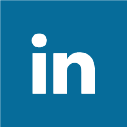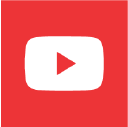The New Way Forward
06.18.2021
TRANSCRIPTION
Wade Anderson:
Hey, manufacturing world, welcome to another episode of Shop Matters, sponsored by Okuma America. I'm your host, Wade Anderson. And today joining me in the studio, I've got the president of Okuma America, Jim King. Welcome, Jim.
Jim King:
Well, glad to be here. Glad to be here without a mask and in person.
Wade Anderson:
It's good to be face to face again doing things.
Jim King:
It is, it is.
Wade Anderson:
So I guess to start this podcast, let's just think back over the last 24 months.
Jim King:
Yeah.
Wade Anderson:
Everything that business has gone through, everything society has gone through, but we went from 2018, 2019 being just boom years for manufacturing, everybody just working, pulling their hair out. And then 2020, in a very short amount of time, everybody go home. We got this whole thing called a pandemic. From running a corporation like you do, that had to have just thrown a lot of challenges your way.
Jim King:
I've been doing management manufacturing for over 40 years and never in my professional career, have I ever had to deal with anything like this. We started out, like you said, 2018, banner year. It was record set. 2019, strong year, still growth. And we had a plan in 2020 that I would have said it was going to be really strong. And this thing called, at that time, Coronavirus that evolved to COVID-19. But Coronavirus... I was in Japan the week of February 3rd for a quarterly board meeting and we left on the sixth, and that was the last time I got on an airplane. And still haven't been on one yet. So during the time we thought that COVID-19 was going to be just a three-month issue. By mid-March, the governor of North Carolina shut down everybody other than essential workers. So we went from a hundred miles an hour to zero. Our customers shut down. Many of the states would never even allow the customers to open up their shops.
Jim King:
So we ended up at that point, as a leader, we started looking at how do we survive? Customers aren't buying anything. So you go from a hundred miles an hour to zero, what do you do? And like most companies, we took a real serious look at it and then the governor said, "Go home." So we sent all non-essential employees home. And immediately had to figure out something called Teams. And how do you do that? How do you train people? Throughout the first couple months, our employees really worked together to learn how to use the technology. It was by far an amazing time of having a culture be extended from the home offices of our employees.
Wade Anderson:
So you didn't have the book that you pulled off the shelf that said, "Managing Through a Pandemic 101."
Jim King:
No, not at all. No. It was every day, the rules changed.
Wade Anderson:
You're writing a new chapter every day.
Jim King:
And at times, the federal government, on the hour would change the direction of what they were asking us to do or not to. And PPP money, do you take it or don't you? And we, as an organization, had to figure all that and navigate all of that through the pandemic. And I'll tell you that having good, strong culture throughout the pandemic and having people trust one another really helped us manage our way hour-by-hour, day-by-day until it kind of settled itself out.
Wade Anderson:
Yep. Very good. So as you think back to embracing technology, what do they say, "Necessity is the mother of invention."
Jim King:
Right.
Wade Anderson:
So talk through, how did that look? Obviously, we lived through, on a Monday morning, "Hey, everybody's gotta log in for Teams. Fire it up. Let's figure it out." What did that look like from a management perspective on how did you go from the top level and get the organization to embrace it?
Jim King:
The luck part of our technology journey was that we implemented a new business system, all based on Microsoft. And we were just starting to roll Teams out in the January, February timeframe.
Wade Anderson:
So it was coming regardless of the pandemic or anything else, that was just going to be a function of our business plan.
Jim King:
And I remember IT telling me that, "Well, it's going to be complicated. We're going to have to train people, but we'll get it installed in the months of January, February. And we'll figure out maybe by June, we'll have everybody trained." And then immediate, it wasn't an analog signal. It was a step signal. It stepped up to a hundred percent and, it was surprising how everyone just grabbed a hold of it and just really worked it.
Jim King:
And I think one of the things we did early on, we held that concert. For all the people that were working remotely-
Wade Anderson:
So yeah, describe to people from outside the Okuma world that is listening to this, we did something kind of fun, part of our corporate values, making it fun. So talk through how that came about.
Jim King:
So one of our employees has a friend of his that does gigs around the Charlotte area and he said, "Listen, how about if we pull all the employees together, get them on a Team session and at lunchtime we'll have a concert." And so everybody logged into Teams. This guy serenaded us, we all wrote songs to him that we wanted to hear and he played for a good hour. It was just amazing. And everybody at that point, had learned how to get onto Teams. And so it kind of forced everybody. Everybody had great time.
Wade Anderson:
Yeah. Yep. I remember sitting there in my living room with Teams up, listening to the concert during lunch and my wife walked in and going, "What are you doing? What are you watching?" I said, "This is work. Jim King's paying me to watch this concert." No, that was good. And I think that's part of, you've got a culture that's within the company, everybody goes remote, but how do you keep in contact and keep people having fun? I think that's one of the aspects. I know one of our distributors, one of the owners of one of our larger distributors, he would do a thing called happy hour. Every Friday afternoon at five or six o'clock, guys would jump on this Team's call and they're all scattered out, they're all remote through different states, but now it's, "Hey, let's just jump on. Maybe talk a little bit of business-related stuff. But other than that, let's just talk and keep relationships going and maintain the comradery that you got."
Jim King:
We continued throughout the pandemic, we were always making sure that we had our normal meetings. We kept on schedule and we still had one-on-ones with each of the employees. We continued the same strategies, but we did it remotely. But more importantly, at that point, the company went from being externally focused and really internally focused once the pandemic hit. How do you survive? How do you conserve cash? How do you not impact as many of the employees that may be impacted because the business had declined. And so we used that technology and it's evolved now to where customers, I want to take the organization from being internally focused and really moved them to the external, using not only Teams, but our customers are looking now to, how do I balance this use of technology, non-person relations are still needed. You got to have people interacting with one another. Humans need that.
Wade Anderson:
Yeah. We're social creatures. So yeah. You bring up an interesting point with everybody kind of turned and looked internally. I think that's not just a corporate thing, that's society as a whole. When the pandemic hit, everybody kind of retracted a little bit and said, "Hey, how do I take care of my home? How do I take care of my family?" And then, obviously, that affects business, that affects the corporate world. And to your point now, as people are getting vaccinated, things are opening up, we're able to go around if we're vaccinated, we're working together without masks. We're kind of getting back to a sense of how it was previously, but we all still got, over the last 18 months or so, so internally focused that now we've got to change and think back to, okay, how do we get back to a service-oriented culture?
Jim King:
Yeah. The term I use a lot, before we were in the pandemic, our company, a lot of our employees were selfless. They would do anything for anybody to take care of the customer and live our corporate values. When COVID hit and they went home, they become somewhat selfish. Because it's about me, it's about my family. It's about how do I protect myself and my family and my livelihood. And now we're going to ask our employees and society, let's go back to being selfless and being willing to serve again. And so when I look at it, that's really going to be the challenge I think for many of the leaders is how do you get to a place where people are again, leading with a servant heart and really taking care of customers and really focusing on the customer?
Wade Anderson:
Right. So one of the things, I've talked to Jack Burley recently up at Big Kaiser, and we were talking a little bit about the subject because all companies basically had to go through the same thing. And he said one of the things that he's been studying and researching more on is the whole culture aspect and how, when the pandemic first hit, you had a core team of people that worked together for years. So they had trust, they had comradery, they had working relationships built with people. And when they went remote, things continued. We were able to keep the wheels on the bus, keep work moving forward, because we still had that culture. We knew who to reach out to. I knew, oh, Jim, King's available during these times, on these days, and not this time because I've been around you for years.
Wade Anderson:
But now, as we're bringing in new people, business is ramping up, you're injecting new people into the business. They don't have that. So how do you bring that back and get that culture going again for the new people? Because if they just start remote, they're never going to have that same bond I think that long-term employees have had.
Jim King:
One of the things that we've started is, realized we also have about 70% of our employees are remote, but we have 30% that are working in the plant. So we have people there every day. So new employees are not allowed to work remote full-time. We make sure that when they come into the office, we have teams of people connected to them so that they start to learn different people, different organizations, we buddy them up so that they get part of the culture and they start to understand really what's happening.
Jim King:
And I think as the vaccinations continue to rise, we'll start bringing more and more people back into the facility.
Wade Anderson:
Right. Probably working through kind of a hybrid schedule of X amount of days per week. And then eventually coming back to a full-time type rotation.
Jim King:
Yeah. The business will dictate a lot of that. If the business levels get up to a level, we still have to take care of the customer. Without a customer, we don't exist.
Wade Anderson:
Right. Absolutely. And being in manufacturing, there's I think some jobs that there's a lot of remote work that can be done. There's a lot of stuff we're just hands on. We have to be hands-on with the equipment and then we're still people doing business with people. So a lot of things I've noticed, over the course of the last year or so primarily, is we're doing a lot more Teams, we're doing a lot of customer meetings with Teams and there's certain things that you can pick up on really well over Teams. We can show a machine. We can see a machine cutting demos. What you can't see really well is the body language, the facial expressions, the glances that's going on with other people in the room. And that's stuff that I noticed as we've kind of opened back up, I've been on a couple of business trips here recently. And you pick up on things like that.
Wade Anderson:
You sit in a boardroom and you're talking about something and you realize, man, for the last year, I couldn't really see this guy and really judge his body language and characteristics. So there's a big component of, how do we take care of the customer, when you could be misreading somebody... What is it? I think it's 30% of what's communicated is verbal. 70% is non-verbal. You could be listening to things, but completely misunderstanding the situation because you're not getting a good read on what the customer is really saying, really needing.
Jim King:
Yeah. If you take a look at our customer base, a lot of those customers are individuals that have small shops. They're busy people. They have complex problems that we can see over any type of digital media, but they require us to really be in front of them to help them choose the right equipment to manufacture these parts. So I think, in the end, there'll be a real mix of using technology to communicate to people, using technology to troubleshoot machines remotely. But in the end, I think there's still going to be times where people need to be in front of the customer, in front of the machine and really experiencing what's happening, real time. And anybody that's in this industry knows that when you're standing in front of that machine, you have a whole different perspective versus if you're looking over a camera.
Wade Anderson:
Yeah. I agree. So here, what was it? Probably January, February timeframe, you did a presentation kind of themed about the new way forward. And that's really kind of become a mantra within Okuma. So tell me how that came about and what does that mean for you as a leader of a corporation like this?
Jim King:
Well, throughout the pandemic, I heard people talk about getting back to normal or what's the new normal, and the more I thought about it, why do I want to go back to anything? The normal before, we've learned so much and technology has helped us evolve. Why would I want to go back to anything or even go to what was before? So I started thinking about a way of how do we communicate to our employees and to our customers that we want to be progressive. And for me that was the new way forward. How do we look at our customers in a different way? And how do we help them and speed is critical in business today?
Wade Anderson:
More so than probably ever before.
Jim King:
Absolutely. So that, for me, it's how do we help our customers understand our technology and be able to implement it in a very expeditious way? So plotting a new way forward, everyone in the organization is starting to look at what's next and how do I define my new way forward? And that's not only using Teams and other technologies, but it's defining how do we operate and increase the speed of transactions for us internally to our distributors, and more importantly, to our customers. And so each department is working through their new way forward to try to figure out, how can I really optimize the resources that we have in our company? And I think it's a very positive outlook. It's very forward-thinking.
Jim King:
And the other part of that is being intentional. So if you're plotting a new way forward, you have to be intentional of what you're trying to get accomplished in that new way. And so the other part of that is, I'm asking everybody to be very intentional, document what you're doing, set a guidepost of where that next turn is, so that you really can define a better way forward for our organization and I'd suggest everybody looking in that kind of way.
Wade Anderson:
I almost feel like, with the pandemic, it kind of ushered in, if you look at your business plan, it's almost like it was written on an Etch-a-Sketch. The pandemic hit and you get to shake it and rewrite the grains of sand a little bit with the change and the adoption of technologies. I think before, you were always trying to think, "Hey, how can we do things better?" But are you really implementing or making those changes, because you got a little bit of a comfort zone. We've always done it this way. It's been working. Do we really want to change how we do a sales meeting? Or how do we do staff meetings and things.
Wade Anderson:
Well, when the pandemic hit and everything changed. It was forced upon us. I think it became a little bit more acceptable to say, "Hey, yeah, let's just wipe the slate and think about how do we do this differently? How do we do it better?" And I think it helped to kind of force people out of that comfort zone, out of that status quo to say, "All right, we're in a little bit of chaos. Let's just go ahead and we've been wanting to make some changes, what's going to happen?" And test it out a little bit.
Jim King:
The other part of it is, is that we all became very short-sighted. We threw our strategic plan out the window in 2020. And we said, "Okay, all the objectives we had, we're going to have three." And it was take care of our employees, take care of our parent company and take care of our distributors. And that was it. That's all we focused on.
Jim King:
And now, the new way forward, starts allowing people to look down the road a little ways. Have a horizon versus what's right in front of your face. And so that's the other reason why the new way forward really gets people to start thinking longer term again. Let's look at how the year is, maybe out to 5 to 10 years, but I'll tell you, as I talked to employees before we started the new way forward, they were all thinking about what was going to happen by the end of the day or the week. And I sat there and said, "Okay, what are you going to do next year?"
Wade Anderson:
You're looking down at the road instead of looking up at where you're going.
Jim King:
Right. Their eyes would roll back and go, "I got to think more than just what's in front of me?" And it's yeah. It's now time to do that.
Wade Anderson:
Yeah. Yep. Very good. Well, Jim, I appreciate your time today. Any key advice, any customers out there that's struggling with adapting to new technology, what would be your one piece of advice you would offer?
Jim King:
Surround yourself with some of the best people you can find. Be willing to admit you're wrong, or you don't know. Listen to those people. Because I think as we start using technology, a lot of us may not be prepared as leaders to deal with it. And if you surround yourself with people that are better than you are, and you're willing to listen to them and pivot as needed, I think leaders today need to be very flexible and be able to pivot when it's required, because not all of us are able to deal with this technology.
Jim King:
I've been in business over 40 years. And some of the new policies, I tell you, I struggle with. But I trust the people around me and I trust their advice. And I would say, take that advice and use it. That would be my last closing statement.
Wade Anderson:
Excellent. I appreciate your time today, Jim.
Jim King:
All right. Thank you.
Wade Anderson:
And as always, if you've got thoughts, questions, ideas for other podcasts, please feel free to reach out to us on okuma.com. You can find me on LinkedIn or wanderson@okuma.com. Until then, we'll see you next time.







